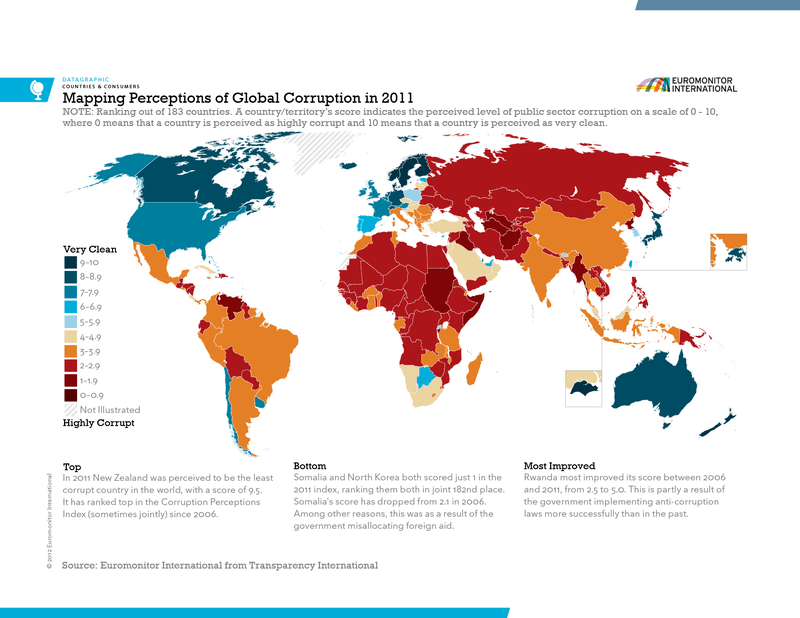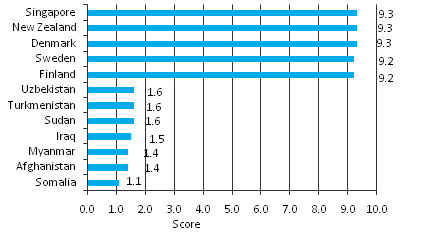Corruption is not a problem only in emerging and under-developed countries. It is present in developed countries as well although it is relatively small. Some countries in the developed world have implemented certain policies that indirectly fosters corruption.
Transparency International’s 2010 Corruption Perceptions Index (CPI) measures the perceptions of corruption in the public sector.The index is created by using surveys and interviews in 178 countries. CPI scores range from 10(least corrupt) to 1 (most corrupt).
The following graphic shows the mapping of the countries based on the Corruption Perception Index (CPI):
Click to enlarge
Source: Special Report: The Impact of Corruption, Euromonitor International
Some of the key findings in the Euromonitor report are:
- New Zealand, Singapore and Denmark are the least corrupt countries in the world based on the CPI score.
- The most corrupt countries are Somalia, Afghanistan, Myanmar, Iraq, Sudan, Turkmenistan and Uzbekistan.
- Corruption affects the poorest section of a society the most.
- Corruption in the developed world is sophisticated and include practices like campaign financing by corporations to influence policy, insider trading on stock markets, etc.
- Certain developed countries are complicit in and benefit from corruption in the developing countries. Banking secrecy laws and favorable tax rules in Switzerland, the UK and Luxembourg facilitate the embezzlement of a nation’s wealth by corrupt elites in the developing world.
- The U.S. is considered relatively incorrupt with a score of 7.1 on the CPI.





